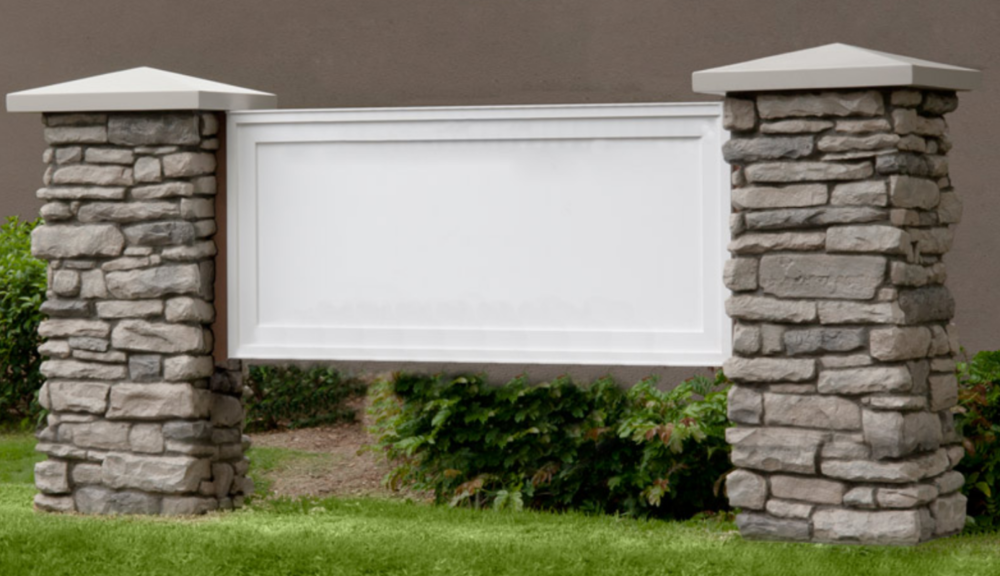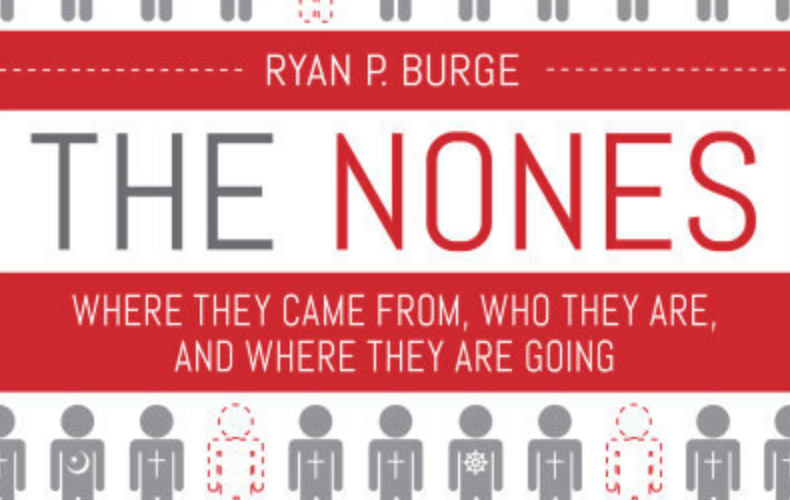
Okay, so part of this is the rise of the nones but some is just measurement.
It asks “be a member” not “current religion.”
Lots of non-denominationals don’t have membership. They just don’t care about it.
And the % of Americans who ID as non-denom. has tripled since 1996. https://t.co/EnZT28k0cu pic.twitter.com/PWJFYv5DOc
— Ryan Burge 📊 (@ryanburge) March 30, 2021
When it came to poll numbers about religion and American life, the late George Gallup, Jr., wasn’t all that interested in many of the most obvious questions.
As he told me in several telephone interviews, starting in the 1980s: The religion numbers just don’t add up. You could see the same sentiments in some of his public addresses.
Gallup — who died in 2011 — wasn’t impressed by the high numbers of Americans who told pollsters that they believe in God, attend worship services on a regular basis and say that faith is “very important” in their lives. That didn’t seem to fit with national patterns of divorce and family breakdown. He kept trying to find ways to ask questions that focused on the role of religious faith in daily life.
When push came to shove, Gallup was convinced that about 20% of Americans were seriously practicing some form of religious faith. The number might be lower than that.
Thus, that recent blitz of news about church membership trends. As the Washington Post headline stated: “Church membership in the U.S. has fallen below the majority for the first time in nearly a century.” Here’s some of the overture:
The proportion of Americans who consider themselves members of a church, synagogue or mosque has dropped below 50 percent, according to a poll from Gallup. … It is the first time that has happened since Gallup first asked the question in 1937, when church membership was 73 percent. …
In 2020, 47 percent of Americans said they belonged to a church, synagogue or mosque. The polling firm also found that the number of people who said religion was very important to them has fallen to 48 percent, a new low point in the polling since 2000.
Click here for the Gallup report on these findings, old and new. Here is another summary from 2019. Here is some additional background from the new Gallup release:
Gallup asks Americans a battery of questions on their religious attitudes and practices twice each year. The following analysis of declines in church membership relies on three-year aggregates from 1998-2000 (when church membership averaged 69%), 2008-2010 (62%), and 2018-2020 (49%). …
The decline in church membership is primarily a function of the increasing number of Americans who express no religious preference. Over the past two decades, the percentage of Americans who do not identify with any religion has grown from 8% in 1998-2000 to 13% in 2008-2010 and 21% over the past three years. …
Most of the rest of the drop can be attributed to a decline in formal church membership among Americans who do have a religious preference. Between 1998 and 2000, an average of 73% of religious Americans belonged to a church, synagogue or mosque. Over the past three years, the average has fallen to 60%.
In other words, the infamous “nones” (click here for some Pew Research Center information) are a key part of this story — but not the whole story. There are several major trends in American life and faith that are affecting some of these numbers.
News consumers who have been paying close attention to public discussions of these issues will not be surprised to see prominent quotations from political scientist Ryan Burge (a contributor here at GetReligion in recent years). If you have not been following Burge on Twitter, then you are missing some of the key debates about — to use the title of another weblog where is work is featured — Religion in Public.
Thus, Burge told the Post:
For some Americans, religious membership is seen as a relic of an older generation, said Ryan Burge, an assistant professor of political science at Eastern Illinois University and a pastor in the American Baptist Church. Gallup’s data finds that church membership is strongly correlated with age: 66 percent of American adults born before 1946 belong to a church, compared with 58 percent of baby boomers, 50 percent of Generation X and 36 percent of millennials.
Burge said many Christians still attend church but do not consider membership to be important, especially those who attend nondenominational churches. But no matter how researchers measure people’s faith — such as attendance, giving, self-identification — Americans’ attachment to institutional religion is on the decline.
Burge, who recently published a book about disaffiliating Americans called “The Nones: Where They Came From, Who They Are, and Where They Are Going,” predicts that in the next 30 years, the United States will not have one dominant religion.
I put together a really simple linear model to project what American religion will look like in the next decade.
The results indicate that the “nones” will unequivocally be the largest group in America in 2029, and that’s largely a result of more mainline decline (10.8%->4.4%). https://t.co/NF6PbrEAMR
— Ryan Burge 📊 (@ryanburge) October 24, 2019
The church membership story is important. However, I think that Gallup would say that these numbers are merely catching up with other trends.
What other trends? Look at the second Burge chart with this post, the one a few lines up from here. What do you see? Consider this, as stated in a post with this title: “Thinking along with Douthat and Burge: Where are the empty pews and why are they empty?”
One of the stories is, of course, the collapse of the safe, vague ground in the middle of the marketplace of American religion. It’s an equation that comes up at GetReligion all the time, with traditional forms of religion holding their own (signs of slow decline and slight growth in some sectors) while the rise of the religiously unaffiliated gets lots and logs of ink (with good reason).
In the middle of all that is story No. 2, which is the demographic death dive of the old world of mainline, liberal Protestantism. …
Some will say: This is just a projection, not a set of carved in stone facts. True, that. However, Burge is only attempting to project trends 10 years into the future. That’s not a giant leap, when you are using trend lines dating back four decades. (I’d like to see that chart enlarged to 1960 or so, which would give us the true peak of old Mainline power and cultural prestige.)
Over the last 46 years, Baptists share of Protestants has gotten just slightly smaller.
While, Methodists are half the size that they used to be, as are Episcopalians.
Lutherans aren’t far behind.
The big shifts are due to non-denoms. They used to be 3%, now they are 23%. pic.twitter.com/YwWgQZ8dek
— Ryan Burge 📊 (@ryanburge) December 15, 2019
I appreciate the fact that Burge has continued to stress another trend that is affecting some of these numbers — the stunning rise of nondenominational megachurches that, often, do not stress formal church membership.
Some, but certainly not all, decline seen in the Southern Baptist Convention’s statistics are almost certainly linked to the growth of these churches that are not hindered by the presence of a controversial brand name on the large signs out front.
Millions of “seekers” flow in and out of their pews without ever becoming “members.” Thus, when pollsters ask if they are “members” of a church, it is likely that some of these people answer “no.” They attend this or that independent church, but they have never joined.
Also, no one will be surprised that a political scientist offered this theory, as well (see this post, “Ryan Burge on nondenominationalism: This is a strategic piece in many news puzzles“). This is a quote from a Religion in Public piece:
It seems plausible that some individuals have left Southern Baptist churches to become nondenominational not for any type of theological reason, but because they disagreed with some of the political positions espoused by famous Southern Baptist leaders. This could manifest itself in a difference in party identification between the groups.
The mean party identification for each of the three traditions provides no support for this hypothesis, however. In fact, there is no statistical difference in the average partisanship of SBC and nondenominational church goers. What may be even more interesting is to note that United Methodists are only slightly more liberal.
Here is another trend that is seen in all of these statistics — “secularization.”
Ah, but what is driving “secularization”? Changes in the global economy and trends in education, for starters. Consider this large slice of an interview with Burge, posted at the progressive Baptist News Global website, discussing the omnipresent “nones” and related trends:
It’s equally futile to try to pigeon-hole this group of Americans, he advised. “Today, they are more politically diverse and regionally diverse. It’s really hard to pin them down.”
Some of them are angry at or afraid of religions. For example, LGBTQ people often feel ostracized in religious settings, while others are turned off by politics in the pulpit. Still others are turned off by theology in general, and some just never went to church growing up.
Generational differences are driving some of the numbers, Burge added. “For every old religious person who dies, they are being replaced by a younger person with no religion. So while 30% of the overall population are nones, among Gen Z it is 40%.”
And assuming nones are all atheists and agnostics also is counterproductive, he warned. Combined, atheists and agnostics comprise only 12% of the religiously unaffiliated while a subgroup known as “nothing in particular” makes up as much as 20% of nones. …
Most remarkable is how quickly religiously unaffiliated Americans have ascended from obscurity in the 1970s to where they are now.
“One thing that fascinates me is how fast they’re growing,” he said. “It is just incomprehensible. Change is glacial for most religious groups, but the nones are growing a point or two every two years. You just don’t see that with other religious groups.”
I read Burge’s new book this weekend and will be writing about some of the questions raised in its pages — questions that, frankly, have been looming in the background for several decades.
Can you say “spiritual, but not religious”?
Think about it. That’s a phrase I started hearing in the New Age fads of the late 1980s. For example: Does the term “Sheilaism” ring a bell?
Stay tuned.










